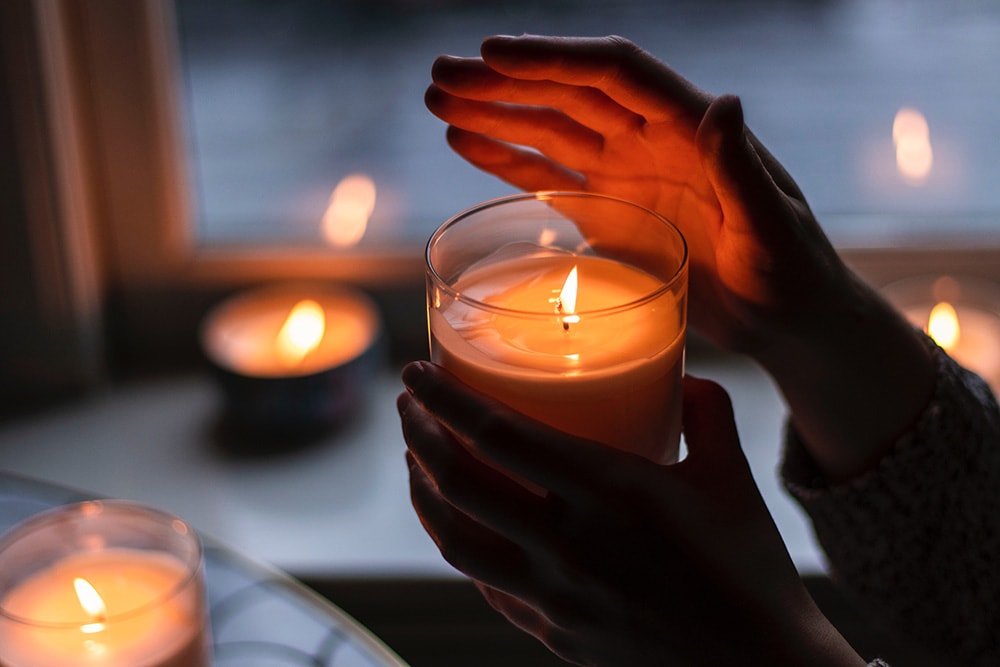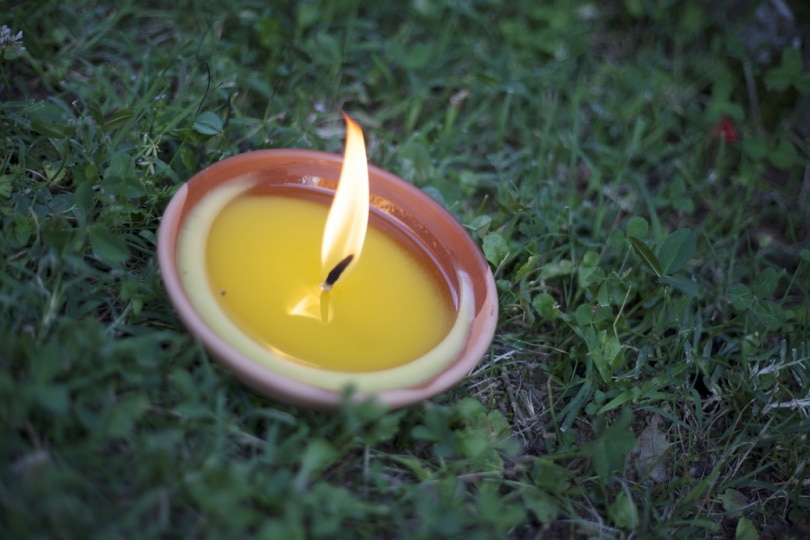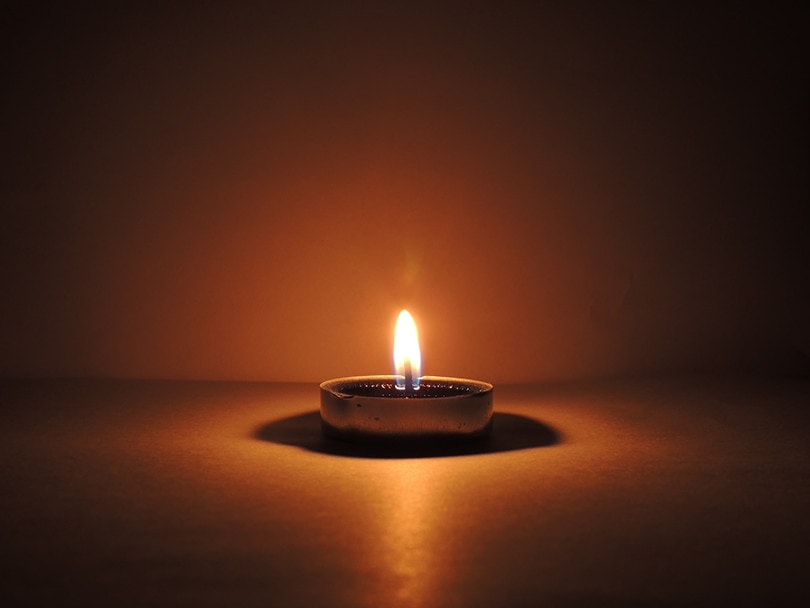What Can I Burn a Candle On? 6 Great Options (With Pictures)
-
Pete Ortiz
- Last updated:
Most people enjoy burning candles in their homes for the ambiance. You’ll find a candle or signs of one in most households, especially because decorated and scented candles fit all occasions and holidays. The problem many people have with burning candles is the dripping wax.
Most candles come with a warning label on the best surfaces to burn and the dangers of burning them. Typically, it suggests burning it on a heat-resistant surface.
This is because heat-resistant surfaces can withstand warm temperatures and don’t heat up easily. Some examples of heat-resistant surfaces are wood, ceramic, and clay.
Heat Resistant Surfaces You Can Burn Candles On
Please note that heat-resistant surfaces are not always heat-proof; they can just stand more heat than other surfaces.
- Granite
- Metal
- Heat resistant wood
- Glass
- Ceramic
- Soapstone
The 6 Surfaces to Burn a Candle On
1. Glass

When you buy a candle, you’ll realize that it typically comes in glass jars. The wick and the wax are sealed in the glass, which makes burning the candle much safer. Ensure that the glass jar does not have any cracks—a cracked jar when the candle is lit can be disastrous.
Also, ensure that the glass jar is not too thin. Canning jars are usually thick, won’t easily crack, and are an excellent option for burning candles.
If you don’t want to burn your candle inside the glass jar, you can always transfer it onto a glass tray or glass surface. The same goes for any candle that does not come in a glass jar. However, the wax will melt whether inside the glass or not, and you need to be sure that the wax will have a place to go.
- Glass is heat resistant and prevents the candle from melting fast and dripping on other surfaces in the house.
- It’s at risk of cracking from the heat
2. Ceramic

Non-porous ceramic surfaces and jars make great candle containers and candle-burning surfaces. However, treat them properly and seal off all the porous spaces. You can place your candle on a ceramic plate or in a ceramic bowl or cup.
- Ceramic is heat-resistant and non-flammable
- Easy to clean
- Cracks easily
3. Heat Resistant Wood

Although wood is highly flammable, it can be treated so that it is capable of withstanding extremely high temperatures and fire without burning. Making wood heat-resistant involves combining it with non-combustible materials and pressure treating it with fire-retardant chemicals.
- It’s durable
- Adds a warm, rustic appeal to the home
- Burning a candle on wood can stain it and leave burn marks
4. Metal

Stainless steel and aluminum make the best candle holders. Your metal jar or container should not leak; therefore, fill the container with water first to ensure that it has no cracks or holes. If unsure, you can always purchase a metal container from candle-making companies.
- Heat resistant, non-flammable, and doesn’t melt
- Durable and can last for years
- Conducts heat
5. Granite

Most kitchen countertops are made of granite as it is so heat resistant. Candle holders made from this rock are available in many various shades. Granite holds well and hardly shows the effects of wear and tear.
- Highly durable
- It performs pretty well when under heat exposure and is easy to clean
- Fades from too much heat exposure
6. Soapstone
Although soapstone is more prone to scratching and chipping than granite, it is heat-resistant and chemically inert. Soapstone also comes in a warm, inviting color, giving your home a warm and inviting aura.
Surfaces made from soapstone absorb and retain heat, acting as candle warmers, enabling your candle to burn for a longer time. The scratches on the surface can be buffed out of the surface or filled in.
- It does not crack when exposed to heat and can easily handle the heat from candles
- Chips easily
 What Not to Burn Candles On
What Not to Burn Candles On
The ideal candle holder or surface should meet these basic requirements: it should be non-flammable and won’t leak or crack. Unless you want to burn down your house or have wax dripping everywhere, there are certain surfaces on which you shouldn’t burn candles.
- Plastic: Plastic quickly melts when exposed to a source of heat. Avoid burning candles on a plastic surface, as this can melt them and cause them to tip over, thereby starting a fire. Read the label on the surface to ensure that it’s not made of plastic.
- Fabric: Avoid placing a lit candle on a tablecloth or any other fabric surface. Most materials are highly flammable and can spread fire quickly.
- Tin: Tin is a heat conductor that warms the candle too fast. It’s also unsafe to burn a candle on a tin surface.
- Paper: This goes without saying. Paper is highly flammable, and dripping wax on a piece of paper can be dangerous. Books are also to be put in the same category as paper.
Benefits of Lighting Candles in Your Home
A candle can serve as a décor piece, fragrance, or therapeutic tool. Several mental benefits come from burning a scented candle. Although it might seem silly to most people, it’s rooted in aromatherapy and is even used by therapists.
 In Conclusion
In Conclusion
Candles cause an average of 15,600 fires yearly, resulting in 150 casualties. Over half of these fires are caused by burning a candle on a flammable surface or near a flammable surface. Therefore, half of these fires can be prevented by burning the candle on a safe surface.
If you have candles in your home, you need to invest in great candle holders. Before getting your candle holder, ensure you choose safe surfaces.
Featured Image Credit: Pixel-Shot, Shutterstock
Contents


 What Not to Burn Candles On
What Not to Burn Candles On